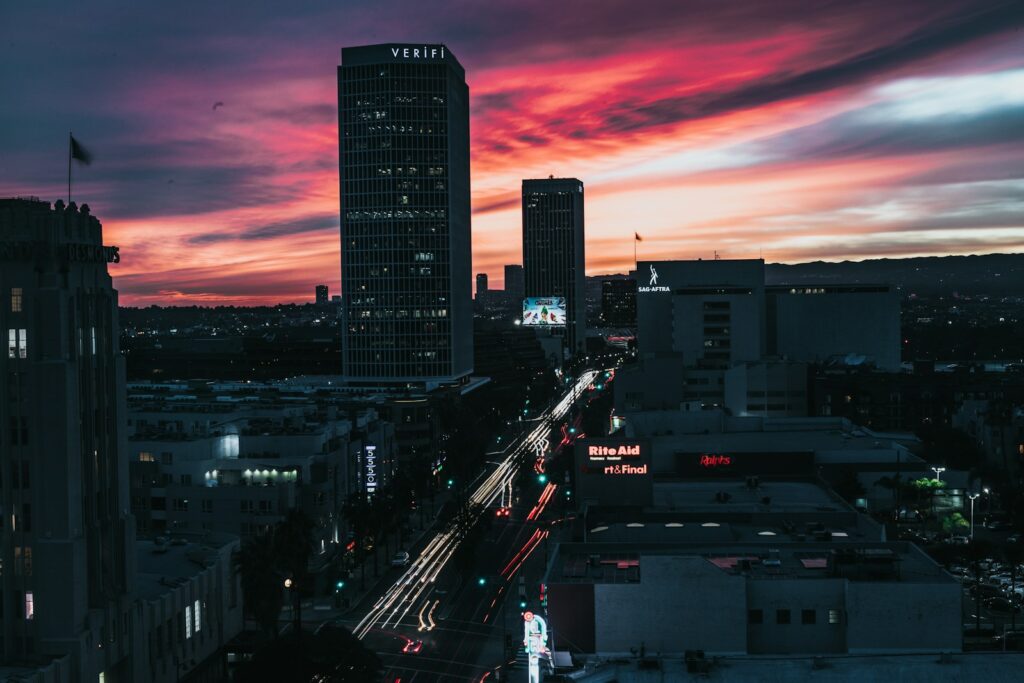Hollywood Hills Griffith Observatory: A Journey Through Time and Space
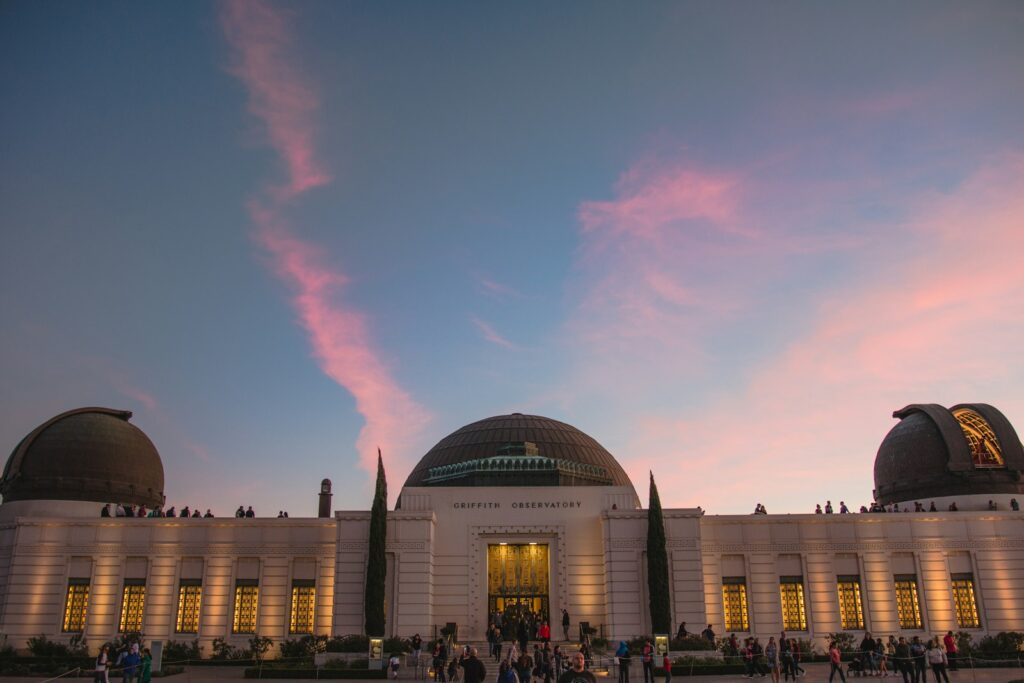
As I stand atop the Hollywood Hills Griffith Observatory, I’m overwhelmed by a sense of awe and excitement. This architectural marvel, perched on the south-facing slope of Mount Hollywood, has been a beacon of scientific discovery and public education for nearly a century. Today, I’m taking you on a journey through this Southern California gateway to the cosmos, sharing my personal experiences and insights to help you make the most of your visit.
A Glimpse into the Past: Hollywood Hills Griffith Observatory’s Rich History
When I first learned about the history of Hollywood Hills Griffith Observatory, I was fascinated by the vision of its benefactor, Griffith J. Griffith. His generous donation in 1919 set the wheels in motion for what would become one of Los Angeles’ most beloved landmarks. As I walked through the grounds, I couldn’t help but imagine the excitement that must have surrounded its opening in 1935.
The observatory’s construction as part of the Works Progress Administration project during the Great Depression is a testament to the resilience and forward-thinking nature of that era. I find it remarkable that even during challenging times, the importance of science education and public access to astronomy was recognized and prioritized.
An Architectural Marvel
The Greek and Beaux-Arts influences in the observatory’s design are impossible to miss. As an architecture enthusiast, I was struck by the harmonious blend of classical elements with the futuristic purpose of the building. The copper-clad domes housing the telescopes are particularly captivating, especially when they catch the golden California sunlight.
One of the most exciting aspects of the observatory’s history, in my opinion, is its status as the third planetarium in the United States. This pioneering spirit continues to this day, making Griffith Observatory a must-visit destination for anyone interested in the cosmos.
Renovation and Expansion: A New Era
The 2002 renovation and $93 million expansion project breathed new life into this historic institution. I was particularly impressed by how seamlessly the new additions, like the Leonard Nimoy Event Horizon Theater, were integrated into the original structure. This thoughtful expansion not only preserved the observatory’s classic charm but also enhanced its ability to serve the public with cutting-edge facilities.
According to the Griffith Observatory Foundation, the renovation project doubled the observatory’s interior space while maintaining its iconic exterior. The project added over 40,000 square feet of public space, including new exhibit areas, a café, and a state-of-the-art planetarium theater. This expansion has allowed the observatory to accommodate over 1.6 million visitors annually, a significant increase from its pre-renovation capacity.
Exploring the Universe: Facilities and Exhibits
As someone who’s always been fascinated by space, I found the exhibits at Hollywood Hills Griffith Observatory to be nothing short of extraordinary. The Samuel Oschin Planetarium is, without a doubt, the crown jewel of the facility. I’ve experienced planetarium shows in various cities, but the level of immersion and educational value here is unparalleled.
A Journey Through Space and Time
The Wilder Hall of the Eye and the Ahmanson Hall of the Sky offer a comprehensive exploration of astronomy and our understanding of the cosmos. I spent hours wandering through these halls, marveling at the interactive displays and thought-provoking exhibits. The Tesla coil demonstrations were a particular highlight – the crackling electricity and dazzling light show never fail to elicit gasps of amazement from visitors of all ages.
One exhibit that left a lasting impression on me was The Big Picture astronomical image. Standing before this massive, high-resolution image of a section of the Virgo Cluster of galaxies, I felt both infinitesimally small and deeply connected to the vastness of the universe.
Dr. E.C. Krupp, Director of Griffith Observatory since 1974, once said, The Big Picture is not just a photograph; it’s a portal that allows visitors to step into the universe and experience its vastness firsthand. This quote perfectly encapsulates the transformative power of this exhibit.
Cutting-Edge Technology and Interactive Learning
The observatory’s commitment to incorporating cutting-edge technology into its exhibits is truly impressive. The Zeiss star projector in the Samuel Oschin Planetarium, for instance, is capable of displaying over 9,000 stars and celestial objects with incredible accuracy. This level of detail provides an unparalleled educational experience for visitors of all ages.
I was particularly fascinated by the Gottlieb Transit Corridor, an exhibit that demonstrates how the apparent motion of celestial bodies is connected to Earth’s rotation and orbit. The precision of this exhibit, which uses a real-time feed from a camera on the observatory’s roof, is a testament to the institution’s dedication to accurate and engaging science education.
Engaging with the Cosmos: Programs and Events
What sets Griffith Observatory apart, in my experience, is its commitment to ongoing education and public engagement. The daily programs offer something for everyone, from casual stargazers to dedicated astronomy enthusiasts.
Under the Stars: Telescope Viewing and Star Parties
One of my most memorable experiences at the observatory was attending a public star party. The opportunity to look through high-powered telescopes and see celestial bodies up close is truly awe-inspiring. I’ll never forget the first time I saw the rings of Saturn through one of these telescopes – it was a moment that rekindled my childhood fascination with space.
The observatory’s role in broadcasting significant astronomical events is another aspect that I find incredibly valuable. During the 2017 solar eclipse, I joined thousands of others at the observatory to witness this rare phenomenon. The energy and excitement in the air were palpable, and the educational commentary provided by the staff enhanced the experience immeasurably.
Nurturing Future Scientists
As a parent, I’m particularly impressed by the observatory’s school programs. The fifth-grade program, in particular, is an excellent initiative that introduces young minds to the wonders of astronomy. It’s heartening to see how these programs ignite curiosity and potentially inspire the next generation of scientists and explorers.
According to the observatory’s educational outreach statistics, over 25,000 students participate in these programs annually. A study conducted by the Los Angeles Unified School District found that students who participated in the observatory’s educational programs showed a 35% increase in interest in pursuing STEM careers compared to their peers who did not participate.
The Observatory’s Impact on Science and Culture
Griffith Observatory’s influence extends far beyond its role as a tourist attraction. It has played a significant part in advancing astronomical research and public understanding of science. The observatory has been involved in numerous scientific discoveries and has served as a platform for communicating these findings to the public.
Scientific Contributions
While primarily focused on public education, Hollywood Hills Griffith Observatory has also contributed to scientific research. For instance, the observatory played a role in the discovery of several asteroids in the 1930s and 1940s. More recently, it has been involved in citizen science projects, allowing the public to participate in real astronomical research.
Dr. Laura Danly, the observatory’s curator, emphasized this dual role in a recent interview: Our mission is to inspire people to observe, ponder, and understand the sky. But we also contribute to the scientific community through our research and by fostering a love for astronomy in future generations.
Cultural Icon
Griffith Observatory’s prominence in popular culture is undeniable. It has been featured in numerous films, TV shows, and other media, becoming an iconic symbol of Los Angeles. From James Dean’s Rebel Without a Cause to more recent productions like La La Land, the observatory has been a backdrop for countless stories.
This cultural significance has helped to maintain public interest in astronomy and science. As film critic Leonard Maltin noted, The observatory’s appearances in popular media have made it a recognizable symbol of scientific exploration, inspiring viewers to look up and wonder about their place in the universe.
Planning Your Visit: Essential Information
One of the things I love most about Griffith Observatory is its commitment to public access. The fact that admission is free is a testament to Griffith’s vision of making astronomy accessible to all. However, this popularity means that planning your visit is crucial to ensure the best experience.
Navigating the Crowds: Tips and Tricks
From my numerous visits, I’ve learned that timing is everything. Weekday mornings tend to be less crowded, offering a more relaxed atmosphere to explore the exhibits. If you’re planning to attend a planetarium show (which I highly recommend), I suggest arriving at least an hour before the show time to secure tickets.
The DASH Observatory bus service has been a game-changer for accessing the observatory. Not only does it alleviate parking concerns, but the ride up the hill offers stunning views of Los Angeles. Plus, it’s an eco-friendly option that aligns with the observatory’s mission of environmental stewardship.
Maximizing Your Experience
One tip I always share with friends planning to visit is to bring a picnic. The grounds surrounding the observatory offer breathtaking views of Los Angeles, and there’s something magical about enjoying a meal while taking in the cityscape below.
Photography enthusiasts will find endless opportunities at the observatory. However, it’s important to note that tripods are not allowed inside the building. I’ve found that the exterior of the observatory, especially during sunset, provides some of the most stunning photo opportunities in Los Angeles.
Accessibility and Inclusivity
I’m impressed by Griffith Observatory’s commitment to making astronomy accessible to all. The facility is wheelchair accessible, and many exhibits have been designed with universal access in mind. Audio guides and tactile exhibits are available for visitors with visual impairments, and sign language interpretation can be arranged for planetarium shows with advance notice.
Supporting the Stars: Getting Involved
My admiration for Griffith Observatory has led me to become more involved with the Griffith Observatory Foundation. This organization plays a crucial role in supporting the observatory’s mission of promoting science literacy. Whether through volunteering or donations, there are numerous ways for visitors to contribute to this important institution.
The observatory’s impact on science education in Los Angeles cannot be overstated. Through its programs and exhibits, it has inspired countless individuals to pursue careers in science and technology. As someone who has benefited from these educational initiatives, I can attest to their transformative power.
Volunteer Opportunities
Volunteering at Griffith Observatory is a rewarding experience that allows you to share your passion for astronomy with others. The observatory offers various volunteer positions, from assisting with public programs to helping maintain the facility. As a volunteer, you’ll have the opportunity to work alongside experts in the field and contribute to the observatory’s mission of inspiring the next generation of scientists.
Membership Benefits
Becoming a member of the Griffith Observatory Foundation is another great way to support the institution. Members enjoy benefits such as priority access to events, discounts at the observatory store, and exclusive behind-the-scenes tours. More importantly, your membership helps fund educational programs and exhibit maintenance, ensuring that the observatory can continue to inspire and educate visitors for years to come.
The Future of Griffith Observatory
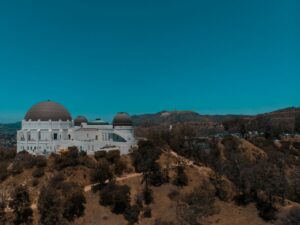 As we look to the future, Griffith Observatory continues to evolve and adapt to meet the changing needs of its visitors and the scientific community. Plans are underway for new exhibits that will incorporate the latest discoveries in astronomy and space exploration.
As we look to the future, Griffith Observatory continues to evolve and adapt to meet the changing needs of its visitors and the scientific community. Plans are underway for new exhibits that will incorporate the latest discoveries in astronomy and space exploration.
Dr. Krupp shared his vision for the observatory’s future in a recent interview: We’re committed to staying at the forefront of public astronomy education. Our goal is to continually update our exhibits and programs to reflect the latest scientific discoveries, while maintaining the timeless appeal that has made Griffith Observatory a beloved institution for generations.
One exciting development on the horizon is the planned upgrade of the Samuel Oschin Planetarium. This project will introduce state-of-the-art projection technology and enhanced seating, providing an even more immersive experience for visitors.
Environmental Stewardship and Sustainability
Griffith Observatory is not just about looking up at the stars; it’s also about preserving the environment here on Earth. The institution has implemented several sustainability initiatives in recent years, aligning with its mission of scientific education and environmental awareness.
Dark Sky Preservation
One of the observatory’s key initiatives is the preservation of dark skies. Light pollution not only affects astronomical observations but also has significant ecological impacts. The observatory has been working with local authorities to promote responsible lighting practices in Los Angeles, helping to reduce light pollution and preserve the night sky for future generations.
Energy Efficiency and Conservation
During my visits, I’ve noticed the observatory’s efforts to reduce its environmental footprint. Solar panels have been installed on the roof, providing a portion of the facility’s energy needs. LED lighting has been implemented throughout the building, significantly reducing energy consumption. These measures not only help protect the environment but also serve as educational tools, demonstrating the practical applications of sustainable technologies to visitors.
The Enduring Legacy of Griffith Observatory
As I reflect on my numerous visits to Griffith Observatory, I’m struck by how it continues to inspire wonder and curiosity with each experience. From its rich history to its cutting-edge exhibits, the observatory stands as a testament to human ingenuity and our enduring fascination with the cosmos.
The observatory’s ability to make complex astronomical concepts accessible to all is truly remarkable. Whether you’re a seasoned astronomer or a casual stargazer, there’s something here to captivate your imagination and expand your understanding of the universe.
As you plan your visit to this celestial gem in the Hollywood Hills, remember that you’re not just visiting an observatory – you’re embarking on a journey through space and time. So look up, wonder, and let the stars ignite your imagination at Griffith Observatory.
Frequently Asked Questions
Q. What are the best times to visit Griffith Observatory?
In my experience, weekday mornings offer the least crowded environment. However, if you’re looking for a more vibrant atmosphere, weekend evenings can be exciting, especially for telescope viewing. Just be prepared for larger crowds.
Q. Are there any special events at the observatory?
Absolutely! The observatory hosts regular public star parties, which I highly recommend. These events usually occur once a month on Saturday evenings. Additionally, the All Space Considered program on the first Friday of each month offers fascinating insights into current astronomical topics.
Q. How can I support the Griffith Observatory?
There are several ways to support this amazing institution. You can become a member of the Griffith Observatory Foundation, which offers various benefits while supporting the observatory’s mission. Volunteering is another great option – I’ve found it to be an incredibly rewarding experience. Lastly, simply visiting the observatory and participating in its programs helps support its ongoing operations.
Q. Is the observatory accessible for people with disabilities?
Yes, Griffith Observatory is committed to accessibility. The building and grounds are wheelchair accessible, and many exhibits are designed with universal access in mind. Audio guides and tactile exhibits are available for visitors with visual impairments, and sign language interpretation can be arranged for planetarium shows with advance notice.
Q. Can I bring food to the observatory?
While food and drinks are not allowed inside the building, you’re welcome to bring a picnic to enjoy on the surrounding grounds. The lawn areas offer stunning views of Los Angeles and are perfect for a meal or snack before or after your visit to the observatory.
Q. Are there guided tours available?
Yes, the observatory offers both public and private guided tours. Public tours are available on a first-come, first-served basis and are an excellent way to get an in-depth look at the facility and its history. Private tours can be arranged for groups and offer a more personalized experience.
Q. What’s the best way to get to the observatory?
While driving is an option, I highly recommend using the DASH Observatory bus service. It’s affordable, eco-friendly, and eliminates the hassle of parking. Plus, the ride up the hill offers beautiful views of Los Angeles. If you do drive, be prepared for limited parking, especially on weekends and holidays.
Q. Can I see the Hollywood Sign from the observatory?
Yes! One of the best views of the Hollywood Sign is from the observatory grounds. The northeast corner of the lawn area offers a particularly good vantage point. Don’t forget your camera!
Q. Are there any age restrictions for the planetarium shows?
While there are no strict age restrictions, children under 5 are admitted only to the first show of the day (typically at 12:45 PM). This policy helps ensure a positive experience for all visitors. I’ve found that older children and adults alike are captivated by the immersive planetarium experience.
Q. How often are the exhibits updated?
Griffith Observatory continually updates its exhibits to reflect the latest scientific discoveries and astronomical events. While the core exhibits remain relatively constant, temporary exhibitions and updates to existing displays are introduced regularly. This commitment to staying current is one of the reasons I find myself returning to the observatory time and time again – there’s always something new to discover!
When planning your visit to Griffith Observatory, it’s worth noting that the surrounding area offers much more to explore. For music enthusiasts, the nearby Hollywood Hills amphitheater capacity might be of interest for catching a live performance under the stars. If you’re considering extending your stay in the area, the charming Hollywood Hills Laurel Canyon neighborhood offers a unique blend of natural beauty and celebrity history.
For those interested in luxury real estate, the Hollywood Hills Bird Streets area is known for its stunning homes with panoramic views. Another notable neighborhood is Wonderland Hollywood Hills, which offers a serene escape from the bustling city below.
Visitors often ask, Is Hollywood CA safe? While, like any urban area, it’s important to be aware of your surroundings, the Hollywood Hills area, including Griffith Observatory, is generally considered safe for tourists and residents alike.
For those captivated by the area and considering a more permanent stay, exploring Hollywood Hills real estate options can be an exciting next step. The diverse neighborhoods surrounding Griffith Observatory offer a range of living experiences, from historic homes to modern luxury residences, all with the iconic Los Angeles backdrop.
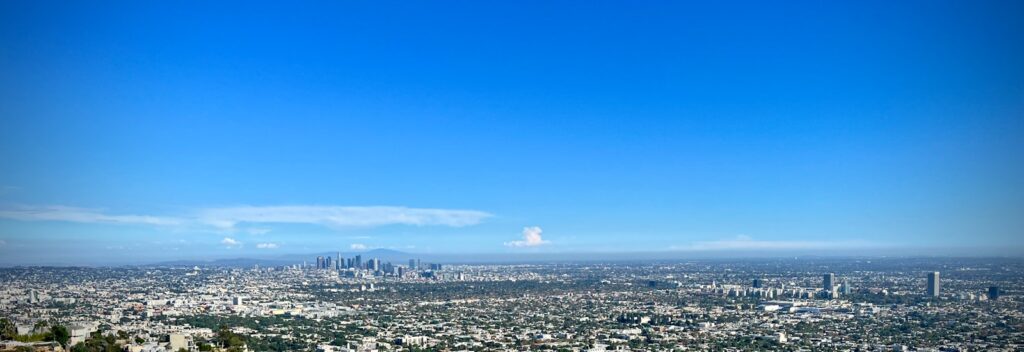
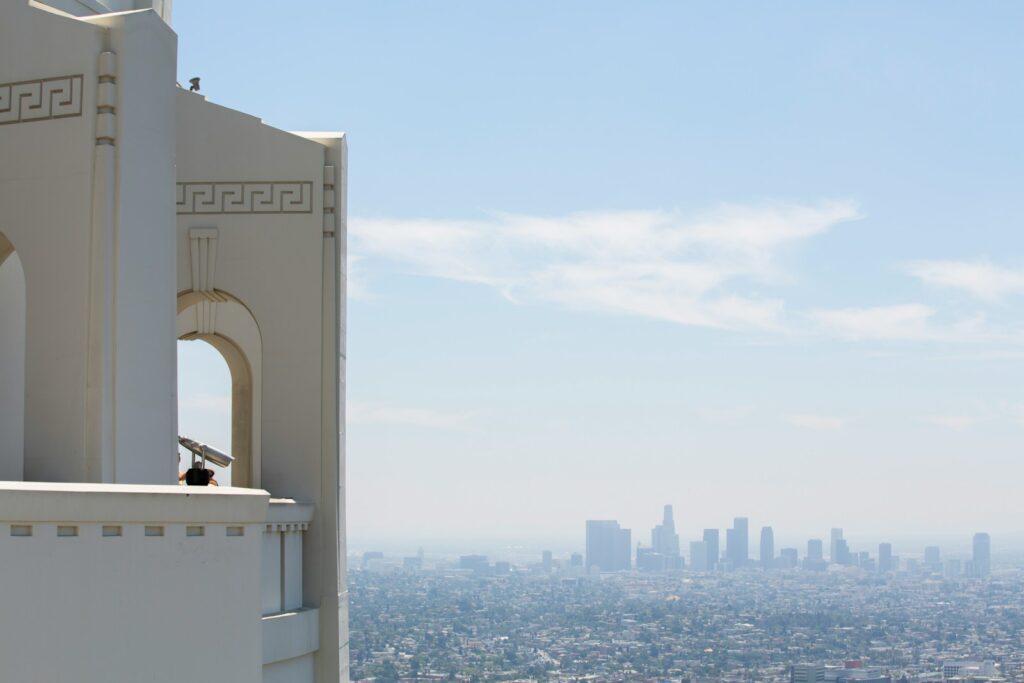

 One of the most significant developments in recent history was the establishment of Hollywood Classic Vineyard in 2001. The York family, recognizing the untapped potential of the area, planted vines on virgin land adjacent to Griffith Park. This bold move marked a new chapter in Hollywood Hills viticulture, demonstrating that high-quality wines could still be produced in this urban environment.
One of the most significant developments in recent history was the establishment of Hollywood Classic Vineyard in 2001. The York family, recognizing the untapped potential of the area, planted vines on virgin land adjacent to Griffith Park. This bold move marked a new chapter in Hollywood Hills viticulture, demonstrating that high-quality wines could still be produced in this urban environment.
 Leveraging Self-Service Options
Leveraging Self-Service Options



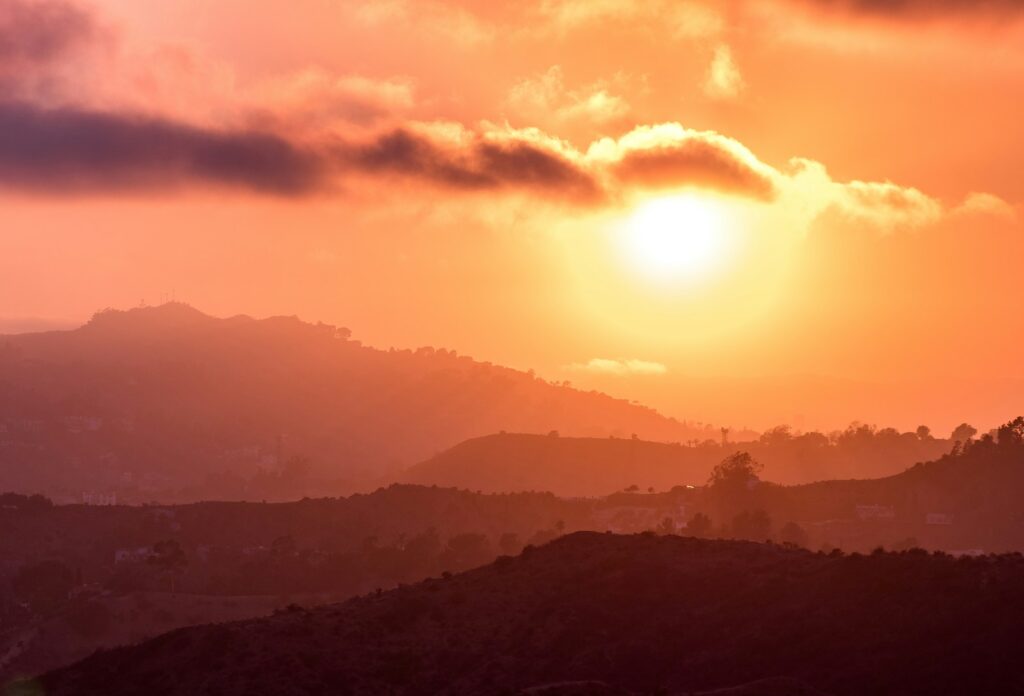

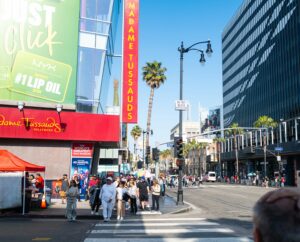

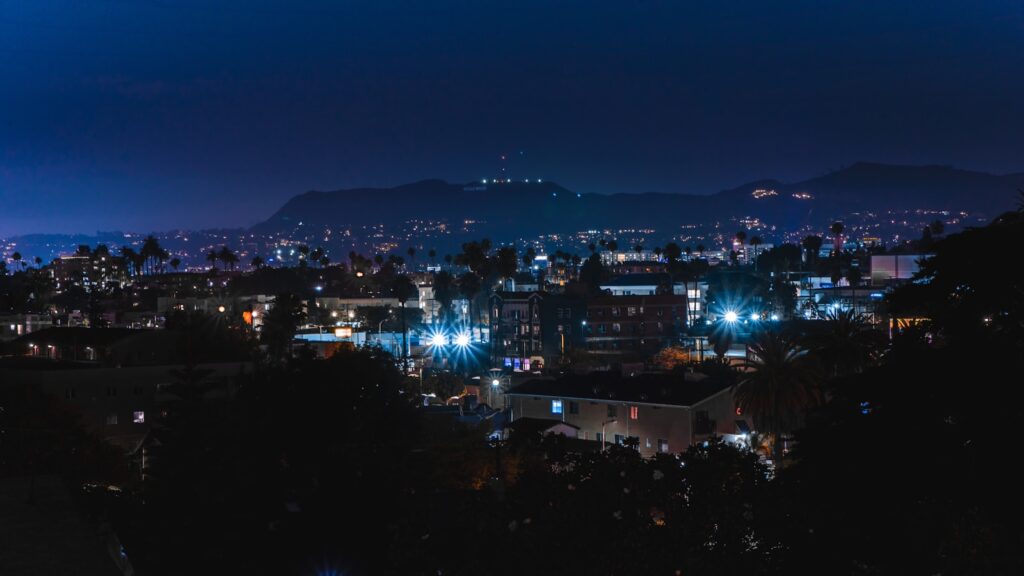 As a long-time resident of Los Angeles and a real estate professional specializing in luxury properties in Southern California, I’ve had my fair share of breathtaking moments. But nothing quite compares to the enchanting Hollywood Hills night view. It’s a sight that never fails to leave me in awe, no matter how many times I’ve witnessed it. Let me take you on a journey through this dazzling nocturnal landscape that has captured the hearts of locals and tourists alike.
As a long-time resident of Los Angeles and a real estate professional specializing in luxury properties in Southern California, I’ve had my fair share of breathtaking moments. But nothing quite compares to the enchanting Hollywood Hills night view. It’s a sight that never fails to leave me in awe, no matter how many times I’ve witnessed it. Let me take you on a journey through this dazzling nocturnal landscape that has captured the hearts of locals and tourists alike.


